Did you know that the original Mackinaw City ferry dock still exists? This had been part of the floating Michigan highway built nearly one hundred years ago! Join us as we maneuver the Mackinac Straits and peek into this corridor of commerce dating back from the Anishinaabe to modern day.

I felt immense gratitude for our boat, “Sea Raven,” her motor and my handsome husband.
I have remained in awe of those who have traversed these waters by canoe!
The weather forecast had predicted clear skies and the mid 80’s, a perfect environment for a day on the water, something I enjoy! Chuck had provided the historical commentary.
The Causeway
Located in Mackinaw City, jutting 1,400 feet into The Straits of Mackinac, stood a causeway which had been built nearly 100 years ago in 1925.
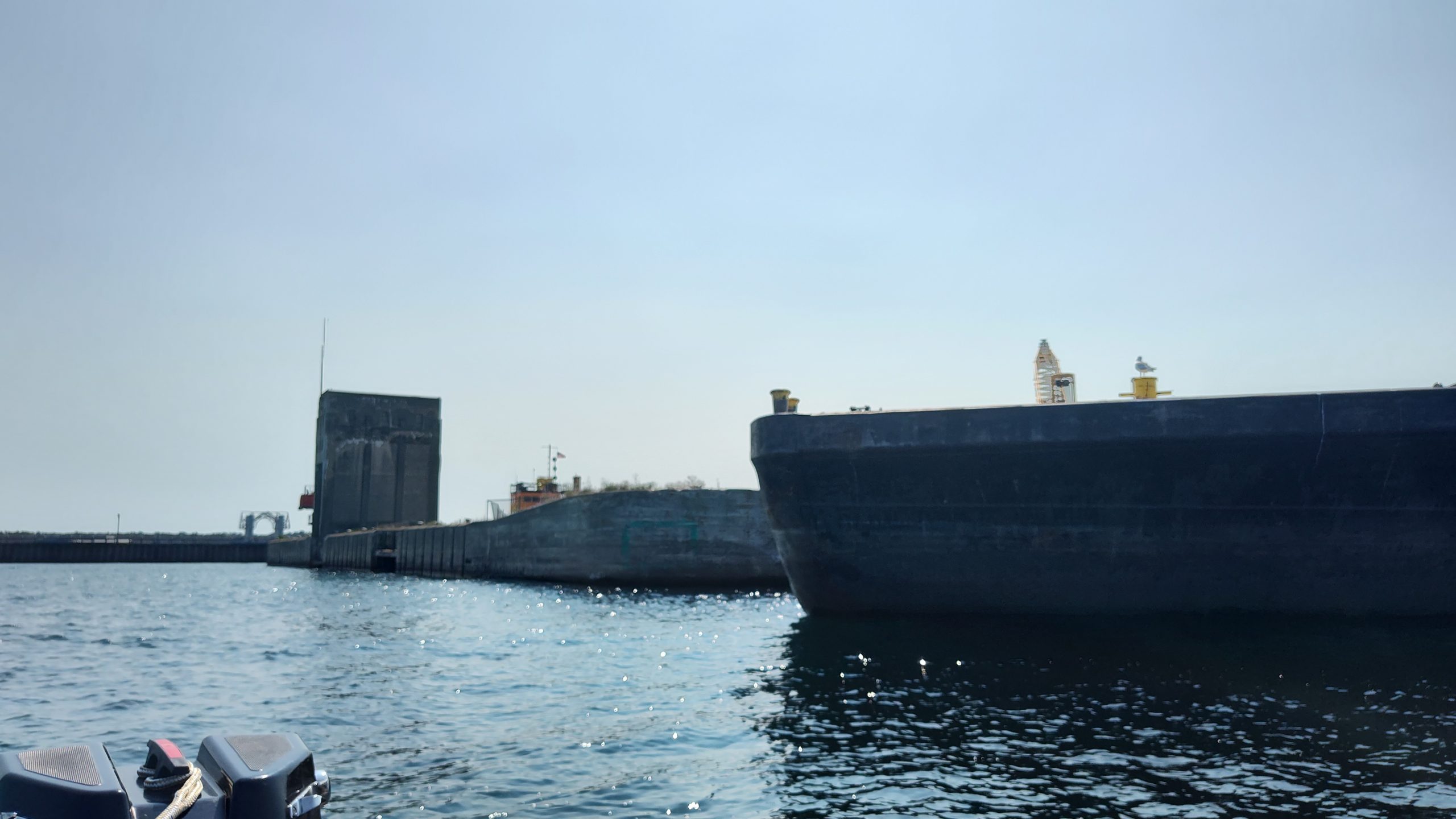
“What’s that boxy, building in the center?” I had asked Chuck. “Oh, that’s the car elevator. That had been built in the 1930’s.” “Whhhaaattt?” I shook my head in disbelief. “Yeah.” He had continued to explain. “They had to lift the cars, one at a time, to load them onto ships’ upper decks.” I had become quiet, which had been a remarkable moment, as I imagined the function of this structure.
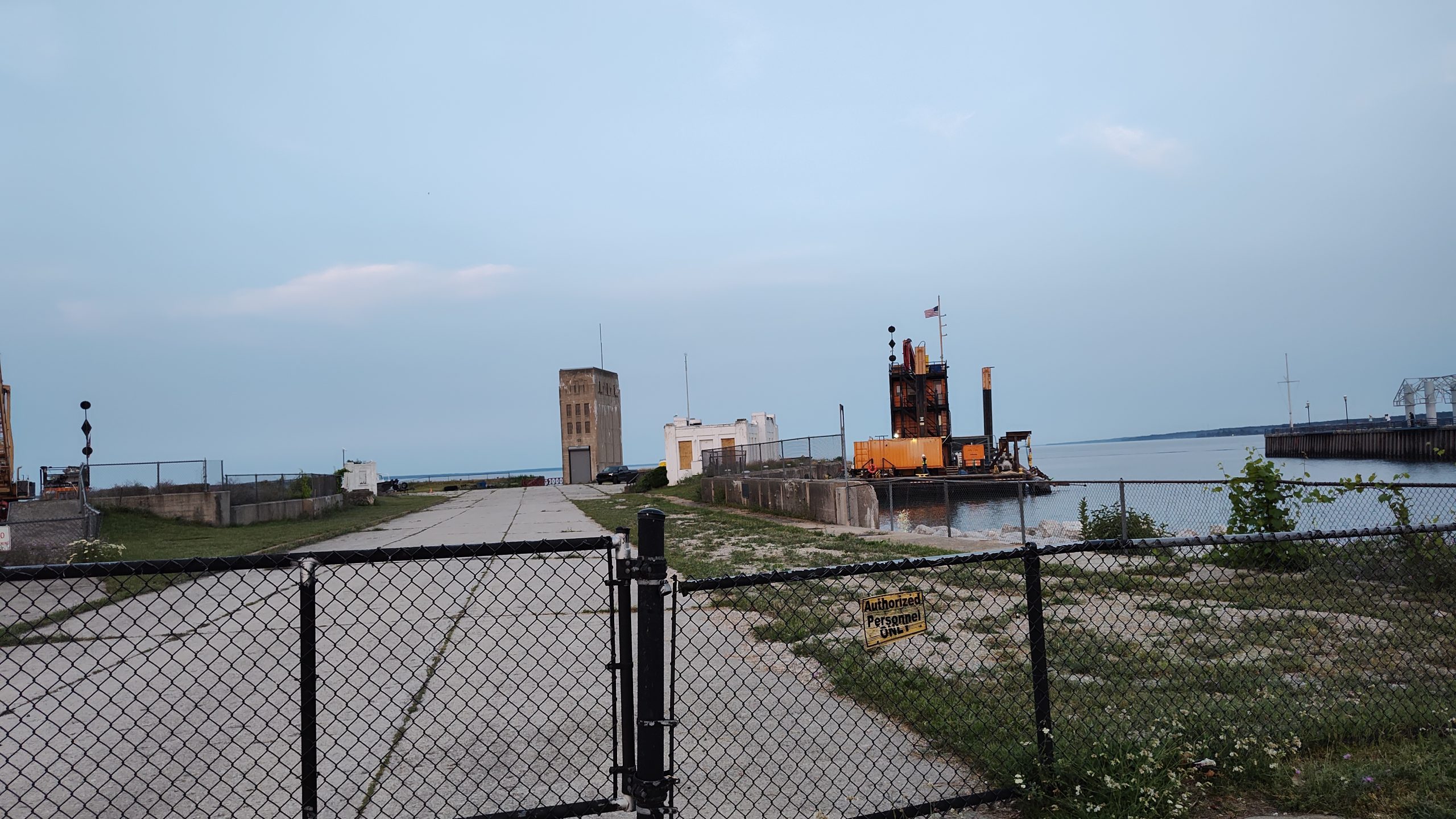
This would be where the autos would have lined up for boarding the ferry boat.
I had no idea that there had been a car elevator to get automobiles on ships! This elevator has been standing ninety-five years! My mind danced back in time imagining the workers, who’d constructed this causeway and elevator for autos, as well as the thousands who had waited here to continue their journey across The Straits on the floating highway.
Train Car Apron
Along the side of the causeway was a gate looking device. “This is the train car apron.” Chuck had explained. “This is where the train cars would be loaded and unloaded. The massive boats would dock right here.” My imagination, once again, began brewing.
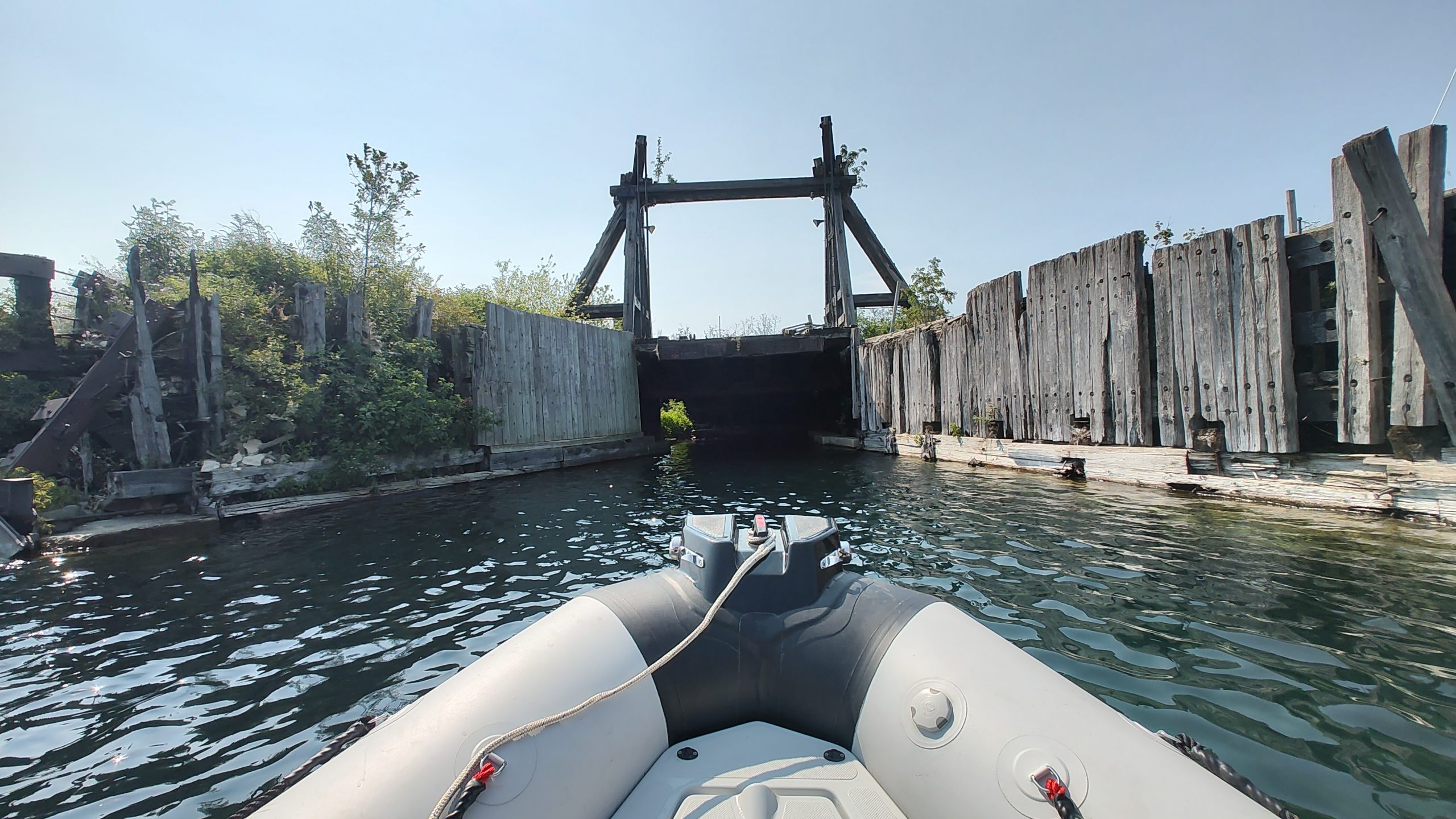
Train cars would be loaded onto the Chief Wawatam on their way to the upper peninsula. This vessel would also transport people to Michigan’s northern land.
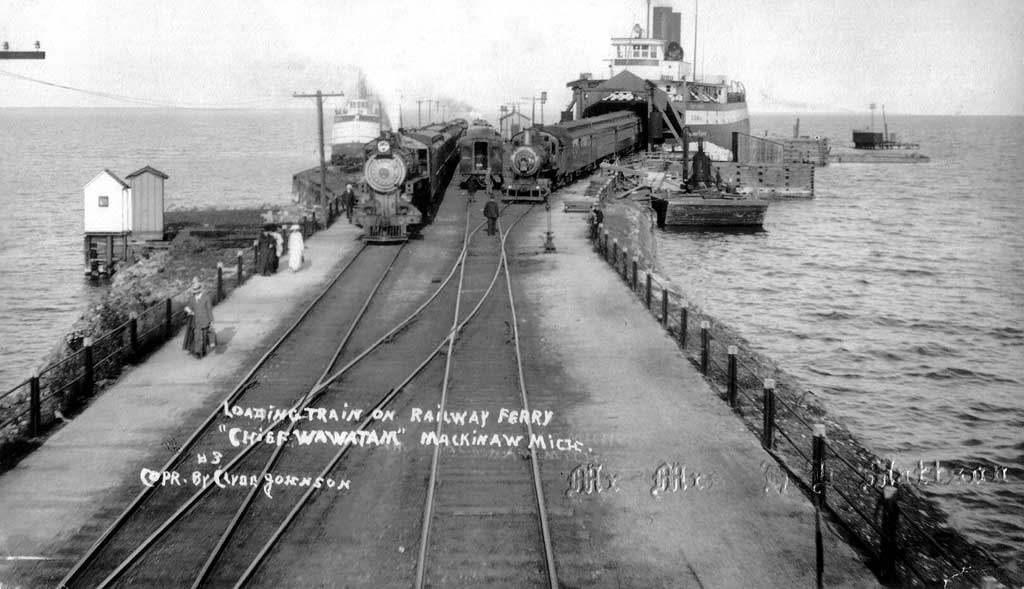
The Chief Wawatam and the Sainte Marie had been the railroad car ferries of the time. In 1917 these vessels would bring the first automobiles across The Straits for the cost of $40.00. The workers would load the automobile on a flatbed railcar and drain their tanks of their gasoline in order to meet the maritime regulations.
Ferry Service
The car ferry service had begun on August 6,1923 with a riverboat, Arial, originally from the Detroit River. She could haul about 20 cars at a time. The journey would take an hour. During hunting season, some had waited ten hours for their turn to ride a ferry.
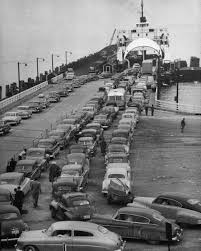
Photo Credit: Industrial History
In the first year Arial had hauled over 10,000 vehicles! The second year they had added two ships. Each one had the capacity of carrying 40 cars per trip. Well, that second year 38,000 cars had been transported across the Mackinac Straits.
By 1925, the state had purchased shoreline property in Mackinaw City and had a 1,400-foot causeway built. The state ordered its first ferry to be built in 1927 and it was christened, The Straits of Mackinac, which could carry 50 cars.
By the 1950’s their fleet of ferry boats had increased to five vessels. Together they had the capacity to haul 500 automobiles per trip. In 1956, the year before the Mackinac Bridge had opened, the fleet had hauled nine hundred thousand cars. During the first nine months of 1957, while the final pieces of the Mackinac Bridge were being secured, they ferry company had beat the previous year’s record.
Car Elevator
I had needed a closer look at the car elevator. Chuck steered Sea Raven alongside the causeway. This unique piece of engineering can still be seen along the dock. It had been used to raise one car at a time so the vehicle could be loaded onto the upper decks of ships. Amazing!
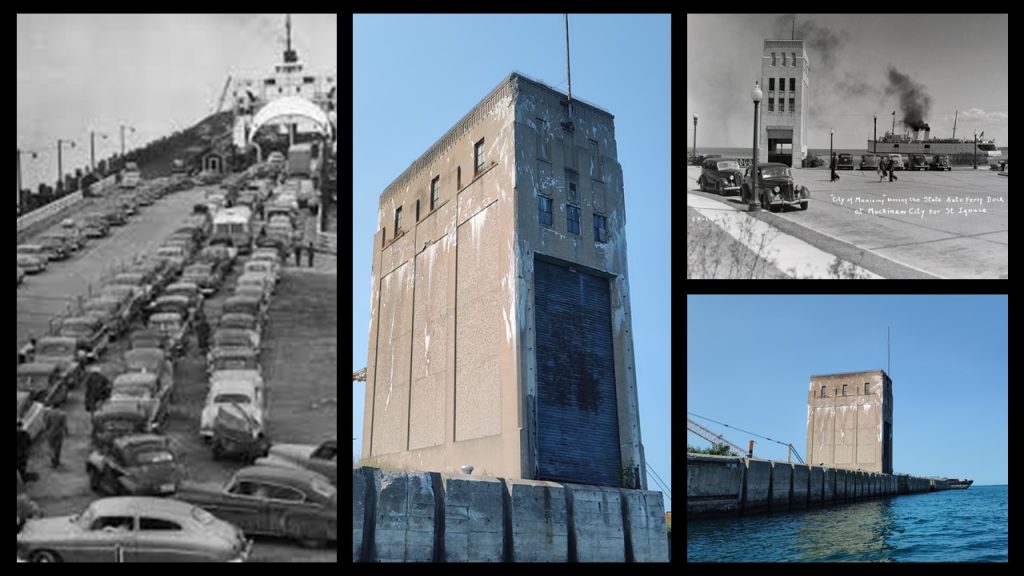
Ice Breaker Mackinaw
As we rounded a bend, a large red Coast Guard ship came into view. “That’s the ice breaker, Mackinaw.” Chuck had informed. “It’s a museum now.”
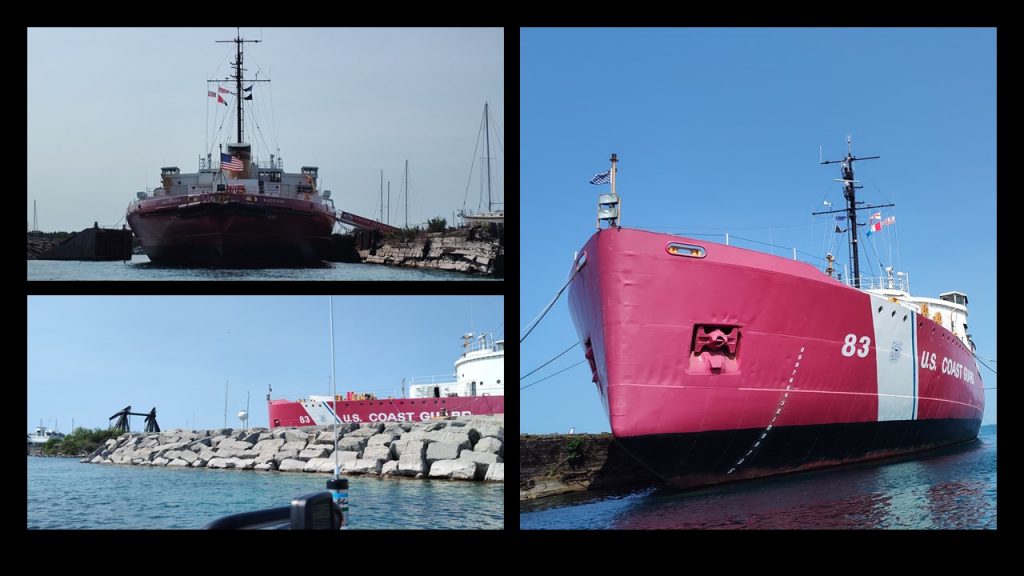
A few days after Pearl Harbor had been bombed, the ice breaker, Mackinaw, had been commissioned. The Toledo Shipping Company had earned the contract. However the time table had been nearly impossible. With delays, the Toledo Shipping Co. had to pay repeated fines which had left them bankrupt. Another company took over the contract. The vessel had been completed by a group of women. (Pictured Below) With young men fighting in WWII in Europe, women stepped into their factory positions. “Rosie the Riveter” became a symbol of strength.
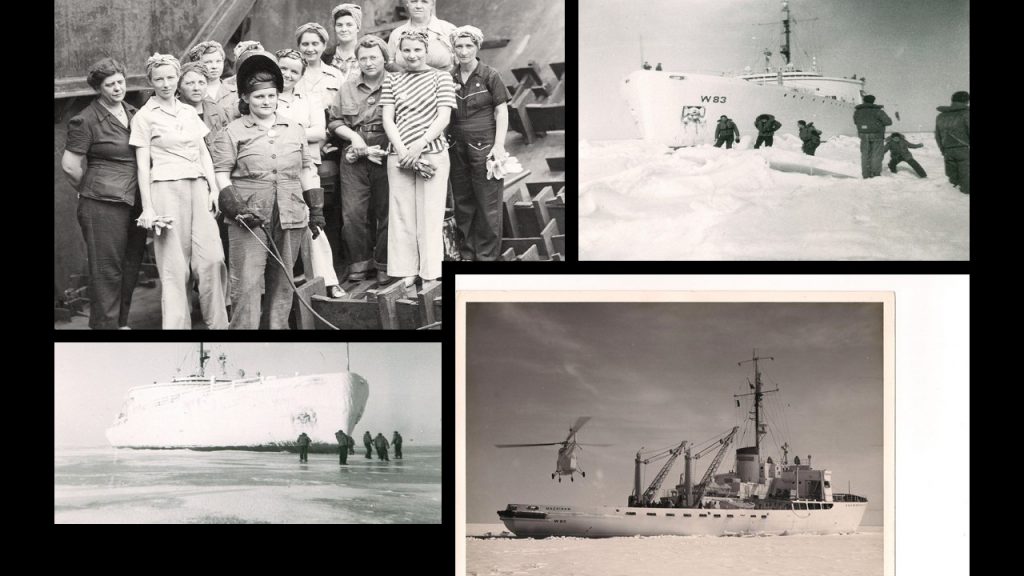
Photo Credits: Industrial History
Bridge Proposal
With the young men home from war our nation had settled into family life by the 1950’s. Traffic had increased, especially ferry traffic to the northern peninsula. Proposals for bridges had landed on the Michigan’s Department of Transportation’s desk.
One of these had been to construct a series of bridges to cross The Straits, “The Island Hopping Bridge Proposal.” Starting in Cheboygan the first bridge would span to Bois Blanc Island. Then, one would follow a roadway across the island to another bridge connecting to Round Island. From there yet another bridge to Mackinac Island. A roadway would skirt the southwest corner of Mackinac Island to a bridge at British Landing. The final stretch would take one across The Straits to the town of St. Ignace in the upper peninsula.
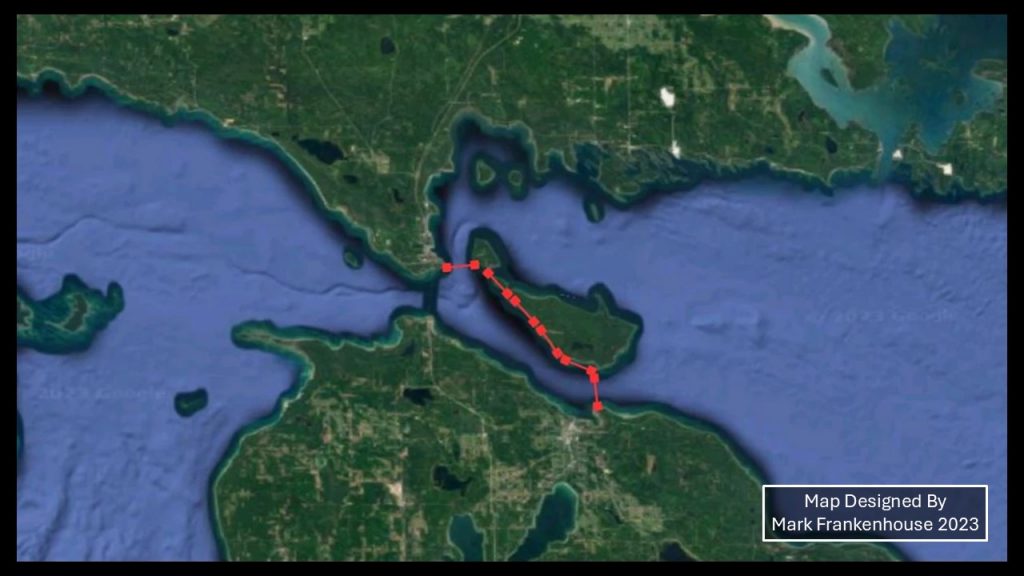
Photo Credit: WRKR by Mark Frankenhouse
Mackinac Bridge Construction
After studying several proposals, it had been decided that a suspension bridge directly across The Straits would be the best plan. Construction began on May 7, 1954. After three years, the bridge had opened to traffic on November 1, 1957.
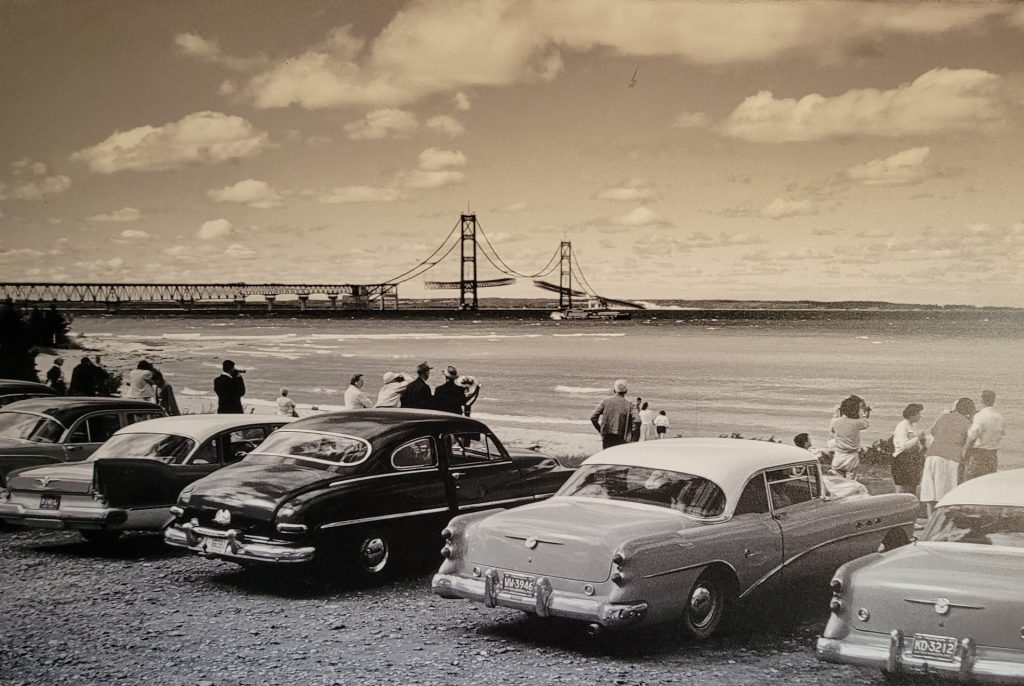
Photo Credit: Industrial History
The Mackinac Bridge spans five miles with 42,000 miles of cable. Sadly, five workers had perished while building this bridge.
With the Baltimore Bridge recently being hit by a container ship, which had caused the whole span to collapse, I had found a cause to investigate. The Mackinac Bridge has been hit three times by marine vehicles. Twice at the northern pier due to foggy conditions. First in 1968 and then in 2021. Both had not damaged the structure. The third time had been in 2023. A crane on top of a barge had struck the bridge, but nobody had realized it until they’d noticed the damage on the crane. The bridge authority had been notified immediately. The bridge had been inspected. No damage had been found. Maintenance and re-painting has been a constant endeavor with this structure since it’s opening 67 years ago.
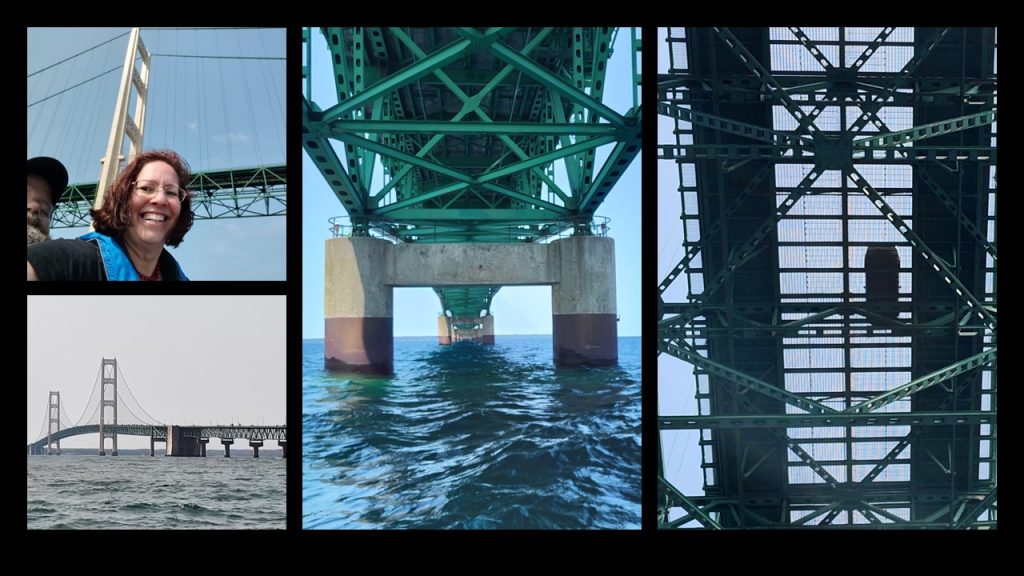
What a unique view of the Mighty Mac!
Ponderings
Thank you for coming along with us as we traversed The Straits of Mackinac. The history that surrounds us holds incredible stories of human strength and tragedy. There are so many more stories about this area, but we only touched on a few. Stay curious! Make memories!
Related Links:
Here’s our YouTube video of our visit to The Mackinac Straits.
“McGulpin Rock” Restless Viking article
Resources:
Northern Michigan History website
WRKR map of the bridge proposal
Mackinac Parks website






2 thoughts on “Mackinac Straits – The 1925 Ferry Dock”
I remember the “Straits” as being my favorite ferry to take to the island every summer when I was a kid, it was great, nice and slow so one could enjoy the experience, plenty of room for bicycles and you could look down into the engine room and watch the crew at work. Many times the Chief Wawatam would pass by with a load of rail cars. I have a photo of the “Chief” do ked at the railroad dock the last year it was intact, really wish they could have saved her. Speaking of the railroad dock, I took intermediate swimming lessons off of it, early June just after the ice melted on lake Huron and there was no getting used to the water, just jump in and swim to the raft, brrrr. Beginner lessons were much more bearable as they were out at trailsend beach with sandy bottom and much warmer water. Thank you folks for all the wonderful adventures in this great area, keep it up!
Peter,
Thanks for reaching out and sharing your rich memories!
Martha